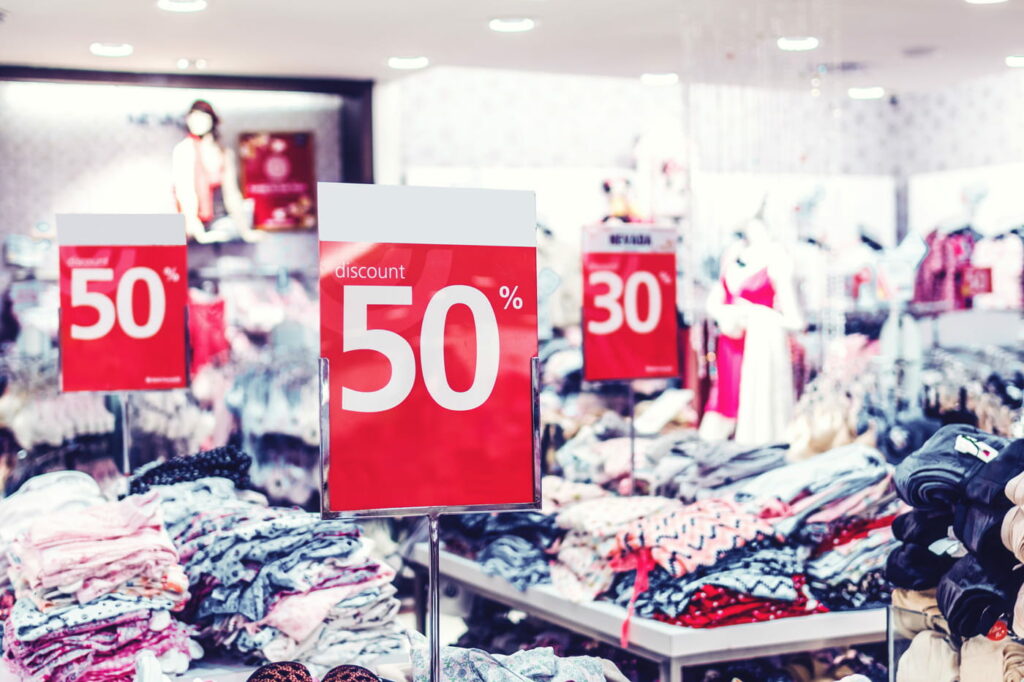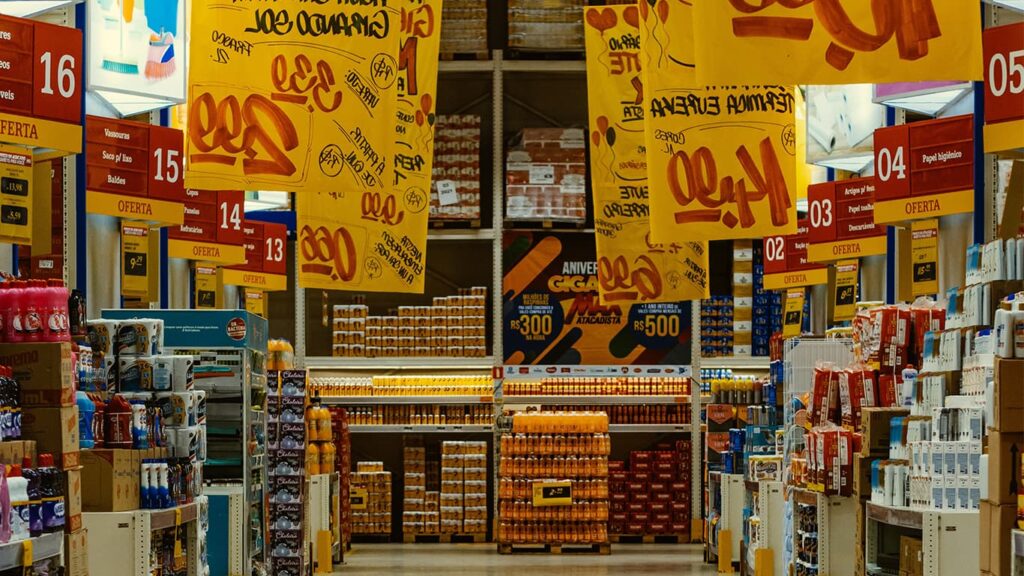Retailers today face a harsh reality - the landscape is more competitive than ever before. With e-commerce giants like Amazon dominating, traditional physical stores are struggling to stay relevant. Customers have endless choices at their fingertips, making it harder to capture their attention and loyalty.
But there's hope. By mastering smart retail marketing strategies tailored to modern consumer behavior, savvy retailers can stand out. From optimizing the in-store experience to leveraging data-driven insights, this guide reveals the secrets to crafting killer retail marketing campaigns that drive serious results. Keep reading to level up your marketing game.
What is Retail Marketing?
Retail marketing refers to the strategies and tactics businesses use to promote and sell products or services directly to consumers. It covers everything from product displays and pricing to advertising and customer service.
At its core, effective retail marketing is about understanding your customers - their needs, preferences, and shopping behaviors - and using that knowledge to create experiences that keep them coming back.
Studies show that investing in personalization can yield over $20 in return for every dollar spent for retail marketers.
Why Retail Marketing Matters
With online shopping taking the lead in the digital sphere, you might think traditional retail is on its way out. But the data tells a different story:
- Brick-and-mortar still accounts for 86% of all retail sales.
- Nearly half (46%) of online shoppers prefer shopping in physical stores when possible.
These statistics highlight the undeniable role of retail marketing in fostering customer engagement, cultivating brand loyalty, and propelling sales. In today's fiercely competitive landscape, where consumer expectations are constantly evolving, a well-crafted retail marketing strategy is no longer an option – it's a necessity for thriving in the dynamic retail environment.
The benefits of effective retail marketing extend far beyond simply attracting foot traffic. It's about crafting immersive, personalized experiences that resonate with customers on a deeper emotional level. By leveraging tactics such as:
1. Captivating window displays and in-store promotions
2. Seamless omnichannel integration
3. Data-driven personalization
4. Experiential marketing campaigns
Retailers can create memorable, emotionally charged encounters that foster brand affinity and drive conversions.
Moreover, retail marketing plays a pivotal role in bridging the gap between the digital and physical realms, ensuring a cohesive brand experience across all touchpoints. As consumers increasingly demand a seamless, consistent experience, retailers must harness retail marketing strategies to:
- Reinforce brand messaging.
- Stand out from the competition.
- Provide a sense of continuity.
- Connect with their audiences on a deeper level.
- Enhance customer loyalty and advocacy.
- Create lasting impressions that transcend mere transactions.
Types of Retail Marketing
Retail marketing encompasses a wide range of strategies and tactics, each tailored to different objectives and target audiences. Understanding the various types of retail marketing is crucial for developing an effective and well-rounded marketing plan.
In-Store Marketing:
This type of marketing focuses on creating an engaging and memorable in-store experience for customers. It includes elements such as product displays, signage, promotions, and customer service.
Digital Marketing:
With the rise of e-commerce and online shopping, digital marketing has become essential for retailers. This includes strategies such as search engine optimization (SEO), pay-per-click (PPC) advertising, social media marketing, email marketing, and content marketing.
Experiential Marketing:
Experiential marketing aims to create immersive and memorable experiences for customers, often through events, pop-up shops, or interactive experiences. This type of marketing can help build brand awareness and foster emotional connections with customers.
Loyalty Marketing:
Loyalty marketing is designed to retain existing customers and encourage repeat business. This can include loyalty programs, personalized offers, and targeted promotions based on customer behavior and purchase history.
Influencer Marketing:
By partnering with influential individuals or content creators, retailers can tap into their audience and leverage their credibility to promote products or services. Influencer marketing can take various forms, such as sponsored content, product reviews, or influencer-curated collections.
The 6 P's of Retail Marketing
The 6 P's of retail marketing serve as a comprehensive framework for developing effective marketing strategies that address various aspects of the customer experience and business operations. By carefully considering and managing each of these elements, retailers can create a cohesive and compelling customer journey that drives sales and fosters loyalty.
1. Product:
The products or services offered by the retailer, including their features, quality, and branding. Successful retail marketing requires a deep understanding of the target customer's needs, preferences, and pain points, and tailoring the product offering accordingly. This may involve product development, sourcing, and merchandising strategies.
2. Price:
The pricing strategy, including discounts, promotions, and perceived value. Pricing is a critical element that can influence customer perception and purchasing decisions. Retailers must carefully balance competitive pricing with profitability, while also considering factors such as market positioning, product life cycle, and customer willingness to pay.
3. Place:
The distribution channels and locations where products are sold, including physical stores, e-commerce platforms, and third-party retailers. Place strategies involve decisions about store locations, online presence, and distribution partnerships. Retailers must ensure that their products are easily accessible and available wherever their target customers prefer to shop.
4. Promotion:
The marketing communication techniques used to promote products and build brand awareness, such as advertising, public relations, and sales promotions. Effective product marketing and promotion strategies should leverage a mix of traditional and digital channels, tailored to the target audience's preferences and behavior. Consistent messaging and creative execution are crucial for building brand recognition and driving customer action.
5. People:
The employees and customer service personnel who interact with customers and represent the brand. Retail marketing success relies heavily on the ability of frontline staff to deliver exceptional customer experiences. Retailers must invest in training, empowerment, and incentives to ensure that their staff embodies the brand's values and provides outstanding service.
6. Physical Evidence:
The tangible elements of the retail experience, including the store design, layout, and overall atmosphere. Physical evidence plays a crucial role in creating a memorable and engaging shopping experience, reinforcing the brand identity, and influencing customer perceptions. Retailers must carefully consider factors such as color schemes, lighting, music, and overall aesthetics to create a cohesive and inviting environment.
Key Retail Marketing Strategies
For retailers to thrive, mastering effective marketing strategies is essential. From creating unforgettable in-store experiences to leveraging the power of data and personalization, retailers must adapt to meet the changing demands of modern consumers. Here are some key strategies to consider:
a) Optimizing the In-Store Experience
There's no substitute for an amazing in-person shopping experience. Everything from your store layout and product displays to your customer service philosophy should work in harmony to keep shoppers engaged and eager to buy. Implement creative merchandising displays, clear traffic flows, knowledgeable staff, and in-store demos or tutorials to create a memorable and enjoyable shopping environment.
b) Leveraging Data and Personalization
Consumer data provides valuable insights into customer trends, behaviors, and preferences, enabling retailers to deliver personalized and exceptional experiences. Utilize CRM tools, analyze traffic patterns, A/B test promotions, and collect customer feedback to make data-driven decisions.
Personalized marketing tailored to individual preferences and behaviors resonates with consumers on a deeper level, fostering increased engagement, conversion rates, and long-term loyalty. Focus on every touchpoint of the customer journey, from pre-purchase research to post-purchase support, to ensure a seamless and memorable experience that differentiates your brand.
c) Maximizing Social Media Presence
With billions of active users, social media platforms offer unparalleled opportunities for reaching and engaging with your target audience. Develop a robust social media strategy that includes content creation, influencer partnerships, and targeted advertising campaigns.
d) Building an Omnichannel Presence
Today's consumers expect a seamless shopping experience across multiple channels. List all your products online, offer buying online/ pickup in-store options, use chatbots for personalized recommendations, and run retargeting ads to re-engage visitors. A cohesive omnichannel strategy maximizes convenience and keeps you top-of-mind.
e) Harnessing Product Sampling
Product sampling and putting them directly into customers' hands can build trust, create buzz, and allow for risk-free trial experiences. Services like Peekage make it easier than ever to run targeted at-home product sampling campaigns with qualified audiences.
f) Leveraging Content Marketing
Creating valuable, relevant content can establish your brand as an authority in your industry. Invest in high-quality blog posts, videos, and infographics that educate, entertain, and inspire your audience.
g) Leveraging Localized Marketing
Connect with your community on a deeper level through localized marketing. Partner with local influencers, sponsor events or teams, use location-based ads, and share user-generated content from local shoppers. By aligning your brand with the local experience, you can become a trusted neighbor.
h) Cultivating Community Engagement
Effective marketing isn't just about billboards and coupons. Encourage user-generated content, run contests and giveaways, publish shareable content, and get involved with local events or charities. The more invested customers feel in your brand, the more likely they'll become passionate advocates.
By implementing these strategies, retailers can effectively market their products and services, create meaningful connections with customers, and stand out in a competitive market.
Key Performance Metrics in Retail Marketing
While implementing effective retail marketing strategies is crucial, it's equally important to measure their success and make data-driven decisions for continuous improvement. Regularly tracking and analyzing key performance metrics can provide invaluable consumer insights and help you optimize your marketing efforts for maximum impact.
Consider monitoring and evaluating the following key performance indicators (KPIs):
- Customer Acquisition Cost (CAC)
- Customer Lifetime Value (CLV)
- Conversion Rates (online and in-store)
- Customer Retention and Loyalty Rates
- Social Media Engagement and Reach
- Return on Marketing Investment (ROMI)
By regularly monitoring and analyzing these key performance metrics, you can gain valuable insights into what's working, what's not, and where adjustments or optimizations are needed. Embracing a data-driven approach to retail marketing will enable you to make informed decisions, allocate resources effectively, and ensure your marketing efforts are yielding the desired results.
Emerging Trends in Retail Marketing
Now that you're acquainted with retail marketing strategies, let's delve into the ever-evolving landscape of consumer trends and technological advancements reshaping the industry. In this dynamic environment, staying ahead of the curve is essential for businesses aiming to maintain a competitive edge.
Here are some emerging trends poised to revolutionize retail marketing:
- Personalization and Hyper-Customization
Consumers today expect personalized experiences tailored to their individual preferences and needs. Leverage data analytics and customer insights to offer personalized product recommendations, customized marketing messages, and hyper-customized products or services.
- Voice Commerce
With the growing popularity of voice-enabled devices like smart speakers and virtual assistants, voice commerce presents a new frontier for retail marketing. A PwC study discovered that 40% of millennials have utilized voice assistants for making purchases.
Optimizing your product listings and marketing messages for voice search can help you capitalize on this emerging trend and reach consumers in a more natural and conversational way.
- Sustainability and Ethical Branding
Consumers, particularly younger generations, are increasingly prioritizing sustainability and ethical practices when making purchasing decisions. Incorporate eco-friendly initiatives into your marketing strategy, communicate your brand's commitment to social and environmental responsibility, and showcase your sustainable practices to resonate with conscious consumers.
- Influencer Marketing
Influencer marketing has become a powerful tool for reaching targeted audiences and building trust with consumers. Identify relevant influencers in your industry and collaborate with them to create authentic, engaging content that resonates with their followers.
- Augmented Reality (AR)
Augmented reality technology allows consumers to visualize products in their own environment before making a purchase, enhancing the online shopping experience.
The global AR retail market is projected to reach $61.3 billion by 2031. So, consider implementing AR features on your website or mobile app to drive engagement, reduce return rates, and boost sales.
By embracing these emerging trends and incorporating them into your retail marketing strategy, you can stay ahead of the curve, meet evolving consumer demands, and position your brand for long-term success in the competitive retail landscape.
Conclusion
In marketing as in life, the only constant is change. As a retail marketer, you need to stay agile and adaptable as customer behaviors, new platforms, and technologies continue to evolve at a rapid pace.
However, amidst this ever-changing landscape, the core principles of great retail marketing remain steadfast: providing exceptional products and services, delivering unparalleled customer experiences, and crafting immersive shopping journeys tailored to your customer's unique needs and preferences.
While embracing emerging trends like voice commerce, augmented reality, and influencer marketing is crucial, never lose sight of the fundamentals. Continuously strive to understand your customers on a deeper level, anticipate their evolving expectations, and leverage data-driven insights to refine and optimize your strategies.
FAQs
1. What is called the retail market?
The retail market refers to the sector of the economy where businesses sell goods or services directly to consumers for personal use.
2. What are the two types of retail marketing?
The two types of retail marketing are online marketing, which utilizes digital channels, and in-store marketing, which relies on physical store tactics to drive sales.
3. What is an example of a retail market?
An example of a retail market is a shopping district in a city where multiple stores, boutiques, and shops offer products such as clothing, electronics, cosmetics, and accessories directly to consumers.
4. What is a retail marketing plan?
A retail marketing plan outlines strategies and tactics that a retailer will use to attract customers, increase sales, and achieve business goals. It typically includes market analysis, target audience identification, promotional activities, pricing strategies, and methods for measuring success.
5. What is the best retail strategy?
The best retail strategy depends on various factors such as the target market, product type, competitive landscape, and overall business objectives. However, some effective retail strategies include offering exceptional customer service, creating a seamless omnichannel shopping experience, focusing on product differentiation, and continuously adapting to consumer trends and preferences.
References
- 45 Statistics Retail Marketers Need to Know in 2024, Invoca Blog,
https://www.invoca.com/blog/retail-marketing-statistics - Top retail marketing trends for your global retail business, Market Finder,
https://marketfinder.thinkwithgoogle.com/intl/en_ssa/guide/global-retail-marketing-trends - 7 Retail Technology Trends: Innovations in Retailing in 2024, Mobidev,
https://mobidev.biz/blog/7-technology-trends-to-change-retail-industry - 8 Important Metrics for Retail Industry KPIs, Tableau,
https://www.tableau.com/learn/articles/retail-industry-metrics-kpis - Retail Operations Management: Trends, Challenges & Best Practices, Cogsy.
https://cogsy.com/blog/retail-operations/




